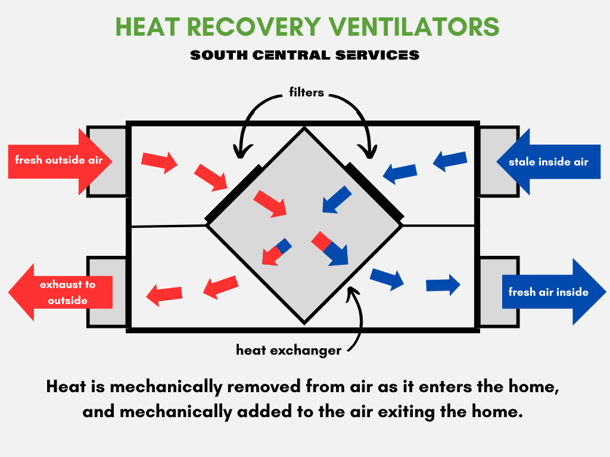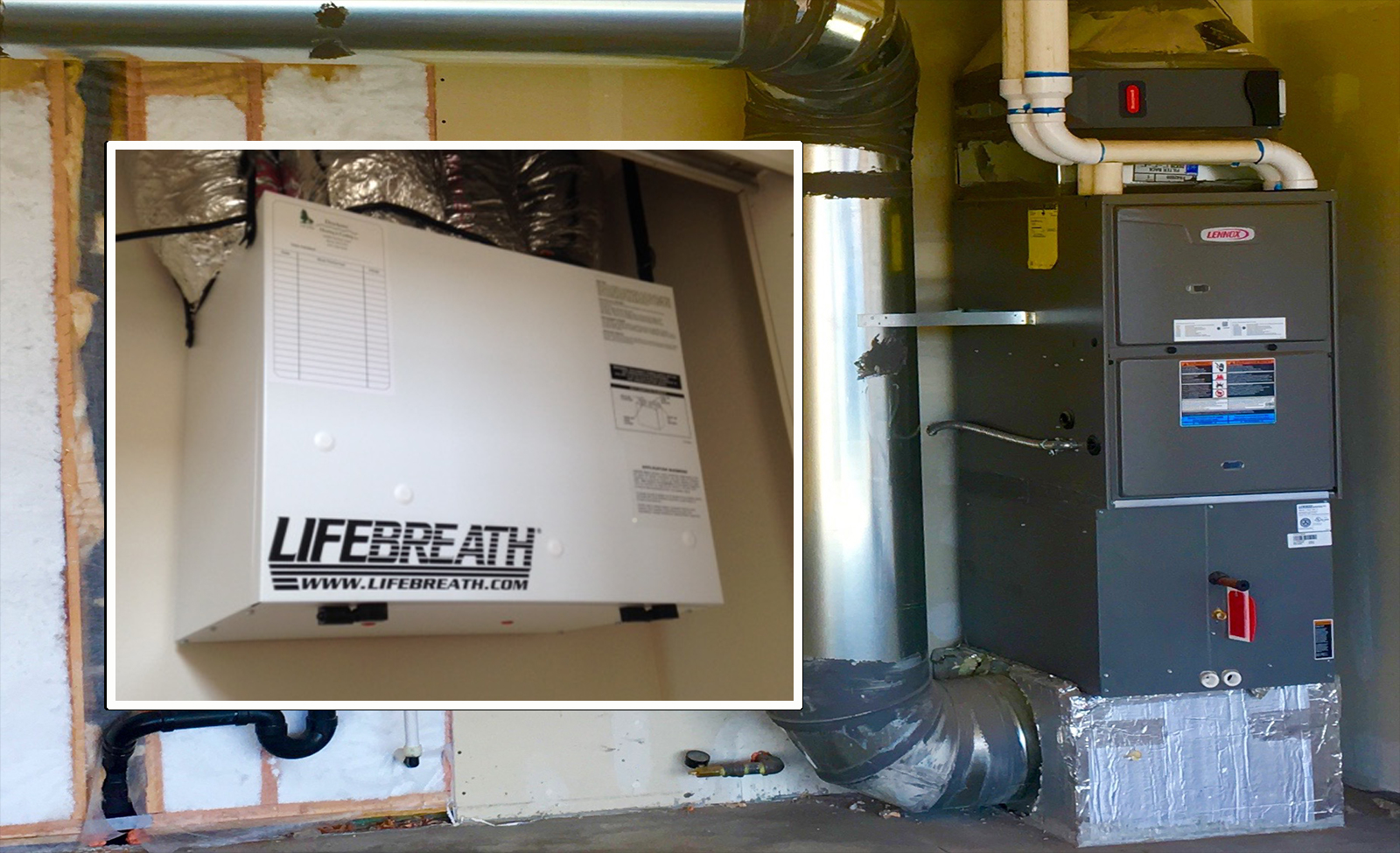The Function of HRV in Sustainable Living
Unveiling the Key Advantages and Uses of Heat Recovery Ventilation in Lasting Layout
Heat Recovery Ventilation (HRV) systems play a crucial function in lasting design. They facilitate a continuous exchange of stale interior air with fresh outdoor air, significantly improving interior air quality. In addition, HRVs add to energy performance by redeeming warm from tired air, which can reduce energy prices. Understanding the diverse advantages and applications of HRVs exposes their significance in modern-day architecture. What various other benefits do these systems use in the quest of sustainability?
Comprehending Heat Recovery Ventilation Solutions
Heat recovery ventilation (HRV) systems are designed to improve interior air high quality while decreasing power loss. These systems utilize a mechanical air flow approach to exchange stagnant interior air with fresh outdoor air, guaranteeing a constant supply of tidy air. By catching warm from the exhaust air, HRVs prerequisite inbound air, reducing the need on heating and cooling systems. This process not just enhances thermal convenience yet also adds to power performance in household and industrial structures. Furthermore, HRV systems help regulate moisture degrees and minimize indoor pollutants, advertising a much healthier living environment. Their strategic implementation is crucial for attaining lasting style goals, as they offer a balance between energy conservation and resident health.
Just How HRV Solution Work
While lots of might know with air flow systems, understanding exactly how heat recovery air flow (HRV) systems operate is vital for appreciating their benefits. HRV systems operate by exchanging stagnant interior air with fresh outside air while transferring warmth between both streams. This procedure occurs in a warm exchanger, where warm from the outward bound air heats the inbound air throughout colder months, reducing energy loss. Conversely, in warmer months, the system can cool inbound air making use of the cooler outward bound air. HRVs are geared up with followers to facilitate air movement and filters to remove particulates, making sure a continual, well balanced air flow procedure. This innovative layout not just enhances energy performance but also adds to maintaining a comfy interior setting.
Enhancing Indoor Air High Quality
Indoor air quality can substantially influence health and wellness, making efficient ventilation crucial in contemporary homes. Heat Recovery Ventilation (HRV) systems play an important role in keeping interior air top quality by continually trading stale indoor air with fresh outside air. This procedure not just decreases airborne contaminants however additionally decreases moisture levels, which can bring about mold and mildew growth and breathing problems. HRV systems filter inbound air, eliminating allergens and particulates, therefore providing a healthier living atmosphere. Additionally, these systems aid eliminate odors and unpredictable organic substances (VOCs) generally discovered in house products. By guaranteeing a regular flow of tidy air, HRV systems add to a general enhanced interior ambience, promoting comfort and well-being for occupants.
Power Effectiveness and Price Financial Savings
Power performance sticks out as a considerable advantage of Heat Recovery Ventilation (HRV) systems. By catching and reusing the warmth from exhausted indoor air, HRVs reduce the power required for heating inbound fresh air, resulting in reduced energy intake. This effectiveness converts into reduced energy bills, offering significant cost financial savings for homeowners and businesses alike. In addition, HRV systems usually get approved for power performance rewards and rebates, better boosting their financial appeal. With time, the initial financial investment in HRV innovation can cause a desirable roi through decreased energy expenditures. Consequently, the assimilation of HRV systems not just promotes lasting layout however likewise offers a useful solution for achieving long-lasting energy financial savings and financial benefits.
Ecological Advantages of HRV

A wide range of environmental benefits develops from the implementation of Heat Recovery Ventilation (HRV) systems. By effectively moving warm from exhaust air to inbound fresh air, HRVs substantially minimize the power needed for heating and cooling areas. This energy efficiency equates to lower greenhouse gas discharges, contributing to a decrease in the general carbon footprint of structures. Additionally, HRV systems enhance interior air high quality by constantly distributing fresh air, thereby decreasing the concentration of indoor contaminants and allergens. The decrease in power consumption aids in saving all-natural sources, making HRVs an important part of lasting layout. In general, the ecological benefits of HRVs play a crucial function in promoting a much healthier world and fostering green structure techniques.
Versatile Applications in Modern Design
Heat recovery ventilation (HRV) systems are increasingly being integrated right into both property and business building projects. In property setups, HRVs boost interior air quality while making best use of energy performance. In industrial areas, these systems maximize air flow techniques, demonstrating their flexibility in modern-day building applications.
Residential Projects Combination
While modern style progressively highlights sustainability, the integration of warm recovery air flow systems in residential projects has become a sensible service for improving indoor air top quality and power effectiveness. These systems successfully transfer warm from exhaust air to inbound fresh air, lessening energy loss and decreasing home heating or cooling down needs. In brand-new builds and retrofits alike, warmth healing air flow can be seamlessly included, giving home owners with a healthier living atmosphere while reducing energy prices. Furthermore, with raising understanding of ecological influences, even more engineers and builders are identifying the long-term benefits of these systems. Because of this, warmth healing ventilation has actually come to be an essential part of lasting domestic style, showcasing adaptability and dedication to eco-friendly methods.
Business Rooms Optimization
As modern industrial areas advance to fulfill the demands of sustainability and performance, the application of heat recuperation ventilation systems emerges as a key strategy for maximizing indoor environments. These systems assist in the exchange of stale interior air with fresh exterior air while reclaiming heat, considerably lowering energy intake. This not only enhances comfort for occupants but also helps in lowering operational prices. Versatile applications look what i found can be observed in workplaces, retail areas, and educational organizations, where air high quality and temperature control are extremely important. In addition, incorporating warmth recovery ventilation lines up with green building accreditations, even more promoting ecological responsibility. Ultimately, embracing such systems in business architecture not only adds to sustainability objectives but also cultivates healthier, much more effective spaces for individuals.
Incorporating HRV Into Sustainable Style Practices
Incorporating warmth recuperation air flow (HRV) systems into sustainable design practices provides considerable advantages in energy effectiveness and indoor air top quality. By making use of HRV, designers can produce economical solutions that not only minimize power consumption but additionally improve the total convenience of interior settings. This alignment with sustainability goals positions HRV as an important element in contemporary architectural techniques.
Energy Efficiency Enhancement
By including heat recovery air flow (HRV) systems right into sustainable layout practices, engineers and builders can substantially improve power efficiency in modern-day constructions. HRV systems work by recording warmth from outward bound stale air and transferring it to inbound fresh air, reducing the energy required for heating or cooling indoor rooms. This process not just lowers dependence on typical cooling and heating systems however likewise lowers overall power intake. Furthermore, HRV systems can assist preserve a constant interior temperature level, decreasing peak power needs. By incorporating these systems, buildings can accomplish significant reductions in energy costs and carbon impacts, lining up with sustainability goals. Eventually, HRV modern technology represents a sensible remedy for boosting power performance in the constructed setting, promoting even more liable resource use.
Indoor Air Quality Renovation
How can warmth recovery air flow (HRV) systems contribute to remarkable indoor air quality in modern-day buildings? he said HRV systems efficiently exchange stale interior air with fresh outdoor air while recuperating heat, minimizing temperature level changes. This procedure decreases the focus of indoor pollutants, such as unpredictable natural compounds (VOCs), allergens, and dampness, which can deteriorate air quality and effect resident health. By keeping excellent moisture levels and making sure a continual supply of clean air, HRVs help produce a healthier indoor setting. On top of that, these systems can be integrated into sustainable design techniques, advertising energy effectiveness together with improved air top quality. HRV Heat Recovery Ventilation. Subsequently, HRV innovation plays an essential function beforehand overall passenger comfort and health in modern building styles
Cost-efficient Style Solutions

Regularly Asked Concerns
What Upkeep Is Required for Heat Recovery Ventilation Systems?

Upkeep for warmth healing air flow systems usually involves normal filter replacements, cleansing of warmth exchangers, inspection of followers and air ducts, and making certain proper water drainage. These tasks help preserve performance and lengthen the system's lifespan in time.
Can HRV Equipments Be Installed in Existing Buildings?
Heat recovery ventilation systems can indeed be mounted in existing buildings. HRV Heat Recovery Ventilation. Retrofitting calls for cautious planning and analysis of the structure's design, guaranteeing compatibility with current systems while making best use of energy efficiency and interior air top quality
Exactly How Do HRV Equipment Effect Sound Levels Inside?
HRV systems can influence interior sound degrees by presenting sound from external sources via air flow. Top notch setups typically integrate sound-dampening functions, minimizing noise influence while giving efficient air exchange and keeping convenience indoors.
Exist Any Disadvantages to Utilizing HRV Solutions?
The downsides of using HRV systems consist of potential high initial expenses, maintenance challenges, and the possibility of decreased interior air quality if filters are sporadically changed, which might bring about issues with moisture levels.
Just how Do I Choose the Right HRV System for My Needs?
Choosing the right warm healing air flow system entails evaluating specific demands, such as building size, climate, and power performance goals. Additionally, examining system attributes, installation needs, and maintenance factors to consider is essential for peak performance and complete satisfaction.